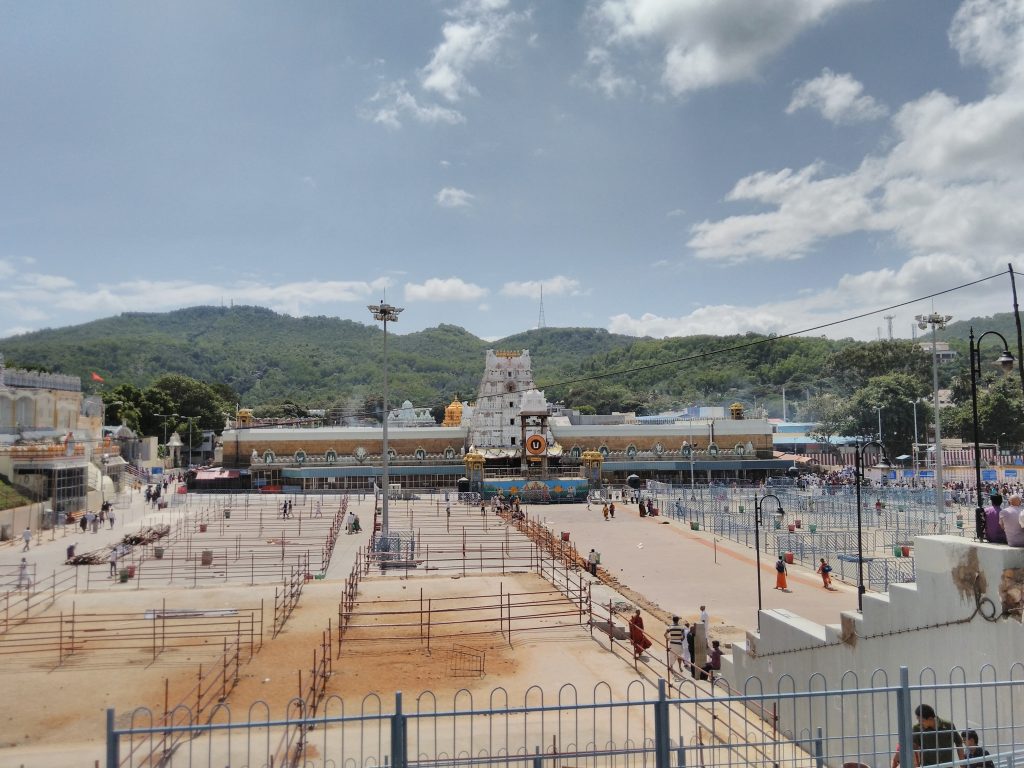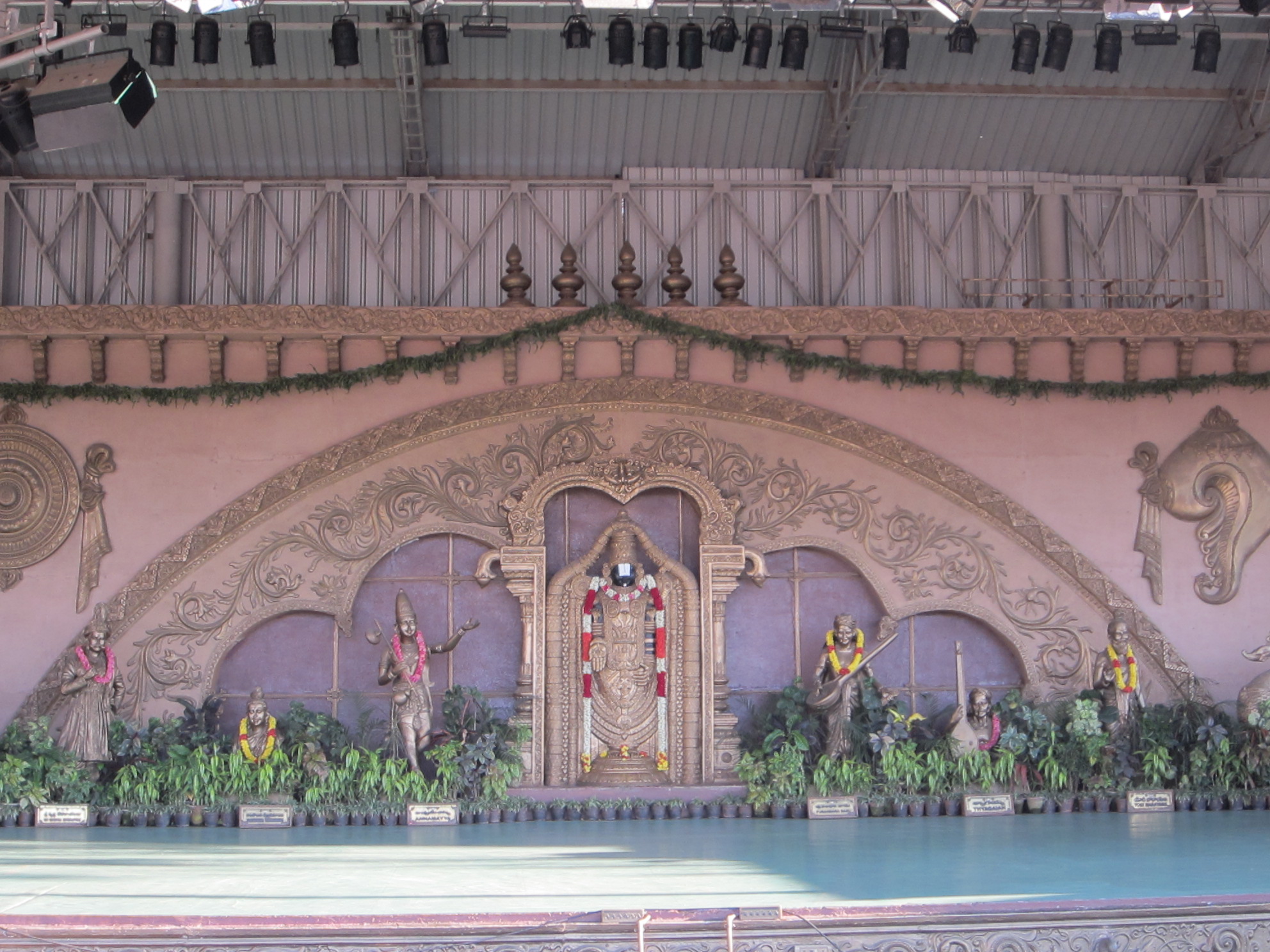Disclosure: We’re reader-supported. When you buy through links on our site, we may earn an affiliate commission at no extra cost to you. For more information, see our Disclosure page. Thanks.
Tirumala Venkateswara Temple Itinerary
The Tirumala Venkateswara Temple, dedicated to Lord Venkateswara, a form of Vishnu, is one of the most revered and ancient pilgrimage sites in India. Located in the Tirumala hills, near Tirupati in the Andhra Pradesh state, it draws millions of devotees from all over the world. The temple, rich in history and devotion, offers an intricate journey for pilgrims, starting from the preparations for the visit to the actual temple itinerary and rituals involved. This summary provides an in-depth guide to the itinerary one can expect when visiting the temple, along with answers to frequently asked questions (FAQs).
Tirumala Venkateswara Temple Itinerary
Preparation for the Visit
Visiting the Tirumala Venkateswara Temple requires careful planning and preparation. Pilgrims should ideally start by checking the temple’s official website or contacting the Tirumala Tirupati Devasthanams (TTD), the governing body of the temple, for the latest updates on darshan timings, ticket availability, and special events.
1. Booking Darshan Tickets: Pilgrims visiting the temple can choose between different types of darshan (the act of seeing the deity). The most common is the Sarvadarshan, which is free but can involve long waiting hours. There are also Special Darshan tickets, which allow a quicker entry with a small fee. Some prefer VIP Darshan options, which are available for those who are willing to pay a premium or who have certain privileges. Booking these tickets in advance, especially during peak seasons, is highly recommended.
2. Accommodation: Tirumala has a variety of accommodation options for pilgrims, from basic dormitories to guesthouses and hotels. TTD runs several rest houses, where accommodation can be booked online. It is wise to book accommodation ahead of time to avoid last-minute hassles.
3. Travel to Tirumala: Tirumala is situated at a high elevation (about 2,800 feet above sea level), and the journey to the temple can be undertaken via road, either by private car, bus, or the renowned Alipiri Footpath, which has 3,500 steps leading up to the temple for those who wish to walk up the sacred hills. Pilgrims are advised to carry sufficient water, snacks, and wear comfortable clothing for the long journey.

Day 1: Arrival and Darshan
Upon arrival in Tirumala, pilgrims typically head straight to the temple for the darshan. The temple is accessible through the main entrance, where long queues are common, but the experience is often made more spiritual with the chanting of hymns and prayers along the way.
1. Entry and Queue Management: The queue system is well organized. For Sarvadarshan, pilgrims may have to wait for several hours, depending on the crowd. For faster darshan, pilgrims can purchase Special Darshan tickets or opt for the VVIP Darshan. It’s essential to follow the rules of conduct, including maintaining silence and adhering to the temple dress code, which typically includes wearing traditional Indian attire (men in dhotis or panche, and women in sarees or salwar kameez).
2. Temple Rituals: Once inside the temple, the pilgrims are guided to different sections, where they can perform rituals and prayers. The main deity of Lord Venkateswara is located in the sanctum sanctorum (garbhagriha), where devotees offer their prayers. Pilgrims stand in line for darshan of the deity, offering their obeisance. During the darshan, pilgrims can receive the teertham (holy water) and prasad (sacred offering) as blessings. The ritualistic experience inside the temple is deeply emotional and devotional, as people from all walks of life come together to pay homage to the deity.
3. Prasadam: After the darshan, pilgrims are encouraged to take laddu prasadam – a special sweet offered at the temple as a sacred blessing. The laddus are famous worldwide, and receiving one is a cherished part of the pilgrimage. The distribution of laddus is managed in an organized manner to ensure that every pilgrim gets one.
4. Worship and Offerings: After completing the darshan, devotees can make additional offerings such as flowers, fruits, or monetary donations. The temple also has provisions for performing special pujas, such as Kalyanotsavam (marriage of the deity) or Vastralankarana Seva (offering clothes to the deity), for an additional fee.
Day 2: Additional Rituals and Spiritual Experience
1. Visit to Other Temples in the Complex: The Tirumala Venkateswara Temple is part of a vast temple complex. Pilgrims often visit other nearby temples, such as:
- Sri Bedi Anjaneyaswamy Temple: A temple dedicated to Lord Hanuman.
- Sri Varahaswamy Temple: Located at the foot of the hill, this temple is dedicated to Lord Varaha, an incarnation of Vishnu.
- Sri Padmavathi Temple: Situated in Tiruchanoor, about 5 km from Tirumala, this temple is dedicated to Goddess Padmavathi, the consort of Lord Venkateswara.
2. Offering of Hair (Moksha Dhara): One of the most significant rituals at Tirumala is the offering of one’s hair to Lord Venkateswara. This act, known as Moksha Dhara, is done by devotees as an expression of gratitude for the blessings they have received. The practice of tonsuring (shaving the head) has been a centuries-old tradition at Tirumala.
3. Vaikuntam Queue Complex (VIP Darshan): For those who opt for VIP darshan, the experience is more personalized, with quicker entry to the sanctum sanctorum. The Vaikuntam Queue Complex is designed to make the darshan experience more comfortable for such pilgrims, with ample seating and less waiting time.
4. Exploring the Hilltop: Apart from the spiritual aspects, pilgrims can enjoy the serene and picturesque views around the temple. The hills surrounding the temple are rich in flora and fauna, providing a peaceful environment for contemplation and relaxation.
Day 3: Departure
On the final day of the visit, pilgrims often take some time to revisit the temple for a final prayer or seek blessings before they leave. After their darshan and rituals are completed, pilgrims can either take the bus or car down the hill, or they may choose to walk down the steps if they are physically able.
Frequently Asked Questions (FAQs)
- What is the best time to visit the Tirumala Venkateswara Temple? The temple is open year-round, but the best time to visit is during the winter months (October to February), as the weather is more pleasant. Avoid visiting during major festivals like Brahmotsavam when the temple is extremely crowded.
- How do I book darshan tickets? Darshan tickets can be booked online through the TTD official website or at designated counters in Tirupati. Special Darshan tickets and VIP darshan tickets are available for a fee.
- What is the dress code for the temple? The temple has a strict dress code. Men should wear dhoti or panche, and women should wear traditional attire such as saree or salwar kameez.
- What is the significance of the hair offering? The act of offering hair symbolizes the surrender of ego and worldly attachments. It is a deeply spiritual act, and many pilgrims donate their hair to express gratitude or seek blessings for a particular wish or desire.
- Can I visit Tirumala for just the darshan, or is there more to explore? Besides the darshan, Tirumala offers a lot for pilgrims to explore, including other temples, scenic viewpoints, and walking trails. Pilgrims can take time to visit temples such as the Sri Varahaswamy Temple and Sri Bedi Anjaneyaswamy Temple.
- Are there any facilities available for senior citizens or differently-abled persons? Yes, the temple has facilities like special entry points and wheelchairs for senior citizens and differently-abled individuals. The TTD staff is also helpful in assisting such pilgrims to have a comfortable darshan.
- What is the prasadam distributed at the temple? The temple’s famous laddu prasadam is distributed to all devotees after the darshan. It is considered one of the most auspicious offerings in the temple.
- How long does it take to complete the darshan? The darshan time can vary based on the crowd. It may take anywhere from 1 to 4 hours for regular darshan, while Special Darshan can be quicker. The experience might be shorter if one opts for the VIP darshan.
- What are the facilities for food and accommodation? The TTD manages multiple guesthouses and restaurants for pilgrims. The Annamayya Bhavan serves vegetarian meals, and there are many eateries offering simple, affordable meals for pilgrims.
- What is the significance of the temple’s history? The Tirumala Venkateswara Temple has a rich history dating back over 2,000 years, with legends connected to Lord Vishnu’s incarnation as Venkateswara. Pilgrims believe that a visit to this temple brings spiritual elevation and fulfills their desires.
In conclusion, the visit to the Tirumala Venkateswara Temple is a blend of spiritual devotion, rich tradition, and cultural heritage. The journey, which may span several days, provides an opportunity for devotees to not only witness the divine rituals but also to engage in reflection and worship at one of India’s holiest sites. By carefully planning the itinerary, pilgrims can make the most of their visit to this sacred temple.


